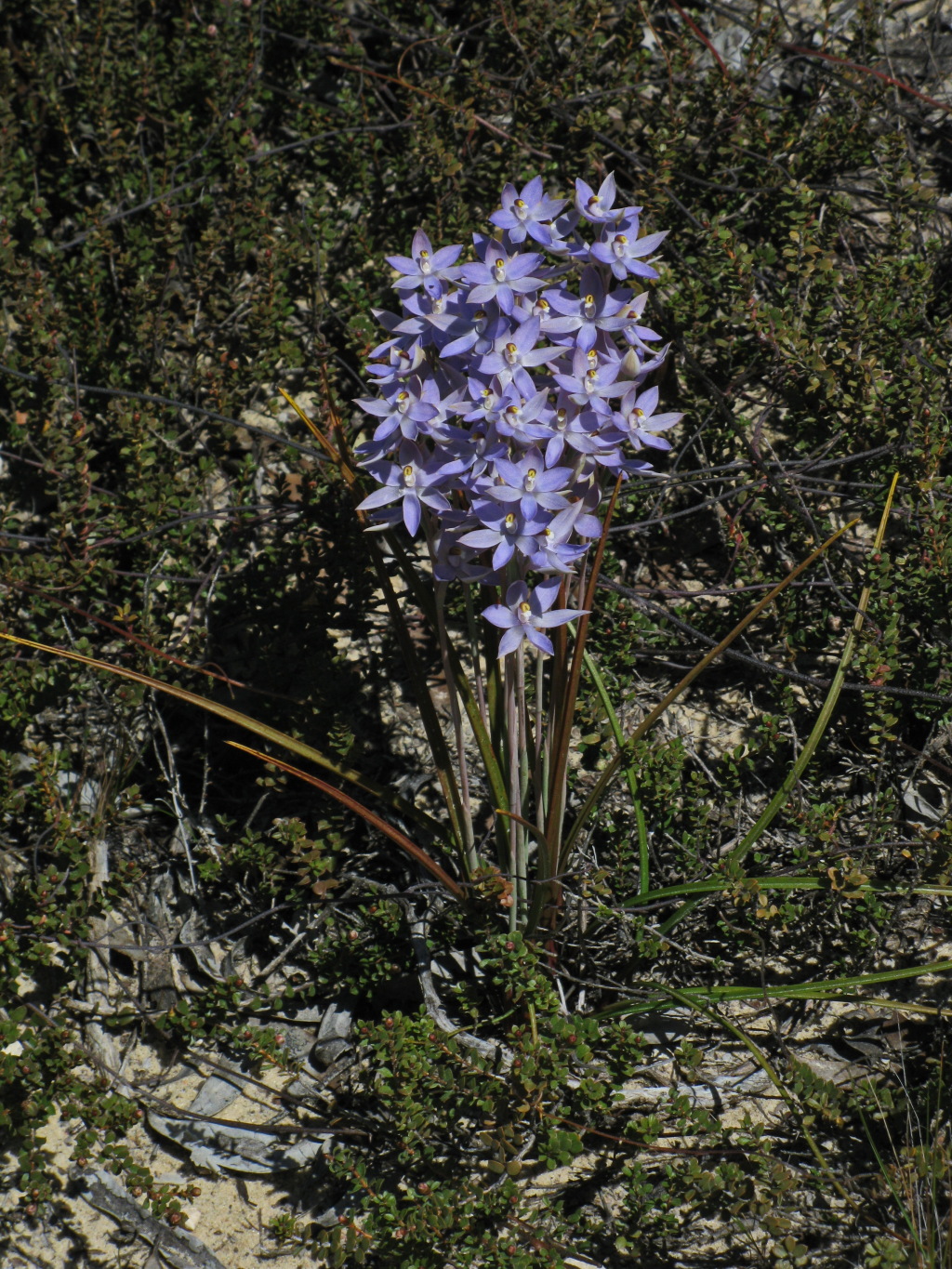Thelymitra nuda
R.Br.Flowering stem erect, straight, 15–50 cm tall, 1.2–3.5 mm diam., green to purplish. Leaf linear to linear-lanceolate, attenuate, 10–25 cm long, 5–12 mm wide, fleshy, canaliculate, ribbed abaxially, sheathing at base, green with a purplish base. Inflorescence (1–)3–8(–12)-flowered, loose. Sterile bracts usually 2, rarely 1 or 3. Perianth segments lanceolate to ovate, (8–)11–15(–18) mm long, dark blue to purplish, rarely pink or white. Column slender, 5–6.5 mm long, pale purplish or pink; mid-lobe hooding the anther, tubular, inflated, gently curved through c. 90 deg., dark brown to blackish, apex emarginate or shallowly v-notched, yellow; lateral lobes converging 1.2–2 mm long, digitiform, porrect at base, bent sharply upwards near the middle at c. 90 deg., each with a toothbrush-like arrangement of white hairs almost along their entire length, terminating in front of mid-lobe. Anther inserted near middle of column, shortly beaked. Flowers Oct.–Dec.
LoM, MuM, Wim, GleP, VVP, VRiv, GipP, OtP, WaP, Gold, CVU, GGr, DunT, NIS, EGL, EGU, WPro, HSF, HNF, Strz, MonT, VAlp. Also SA, Qld, NSW, ACT, Tas. Grows mostly in more mesic near-coastal forests and heathlands on sandy, gravelly or clay loams.
Flowers expand readily on warm to hot days.
Weber, J.Z.; Entwisle, T.J. (1994). Thelymitra. In: Walsh, N.G.; Entwisle, T.J., Flora of Victoria Vol. 2, Ferns and Allied Plants, Conifers and Monocotyledons, pp. 840–854. Inkata Press, Melbourne.
 Spinning
Spinning


